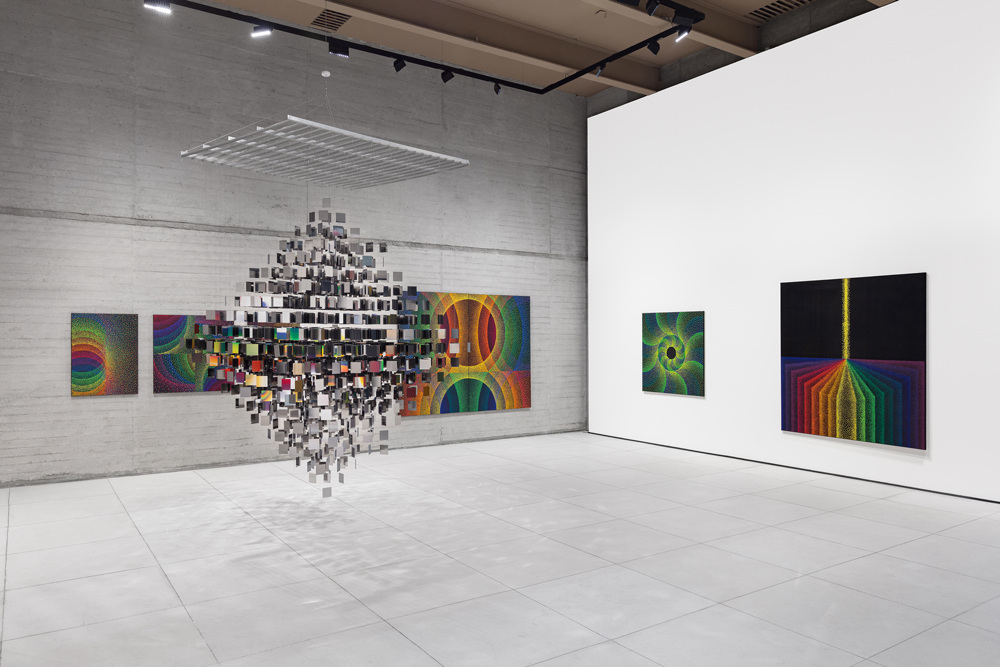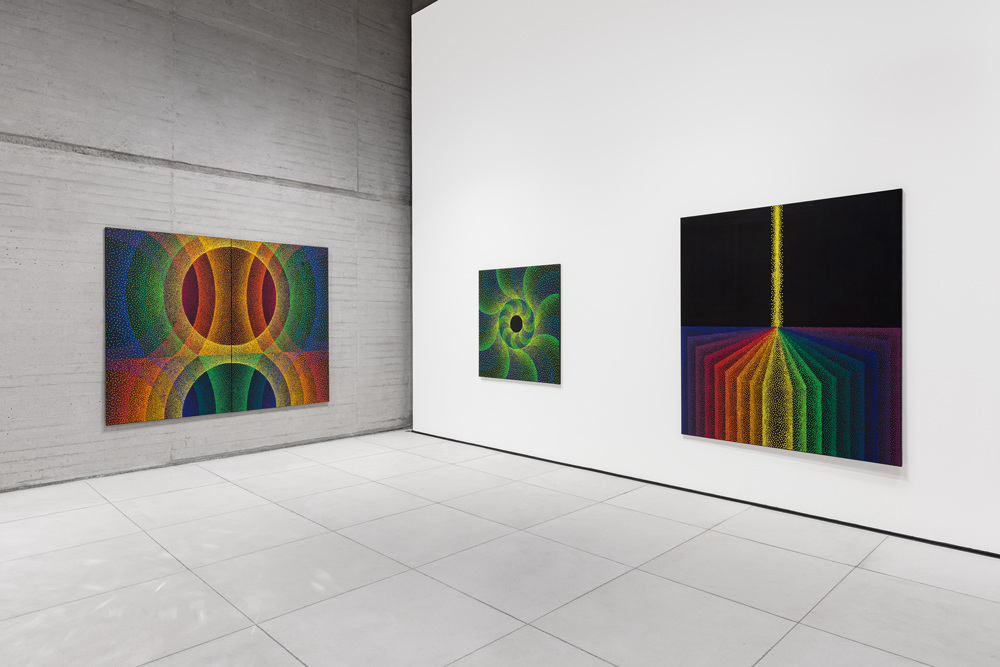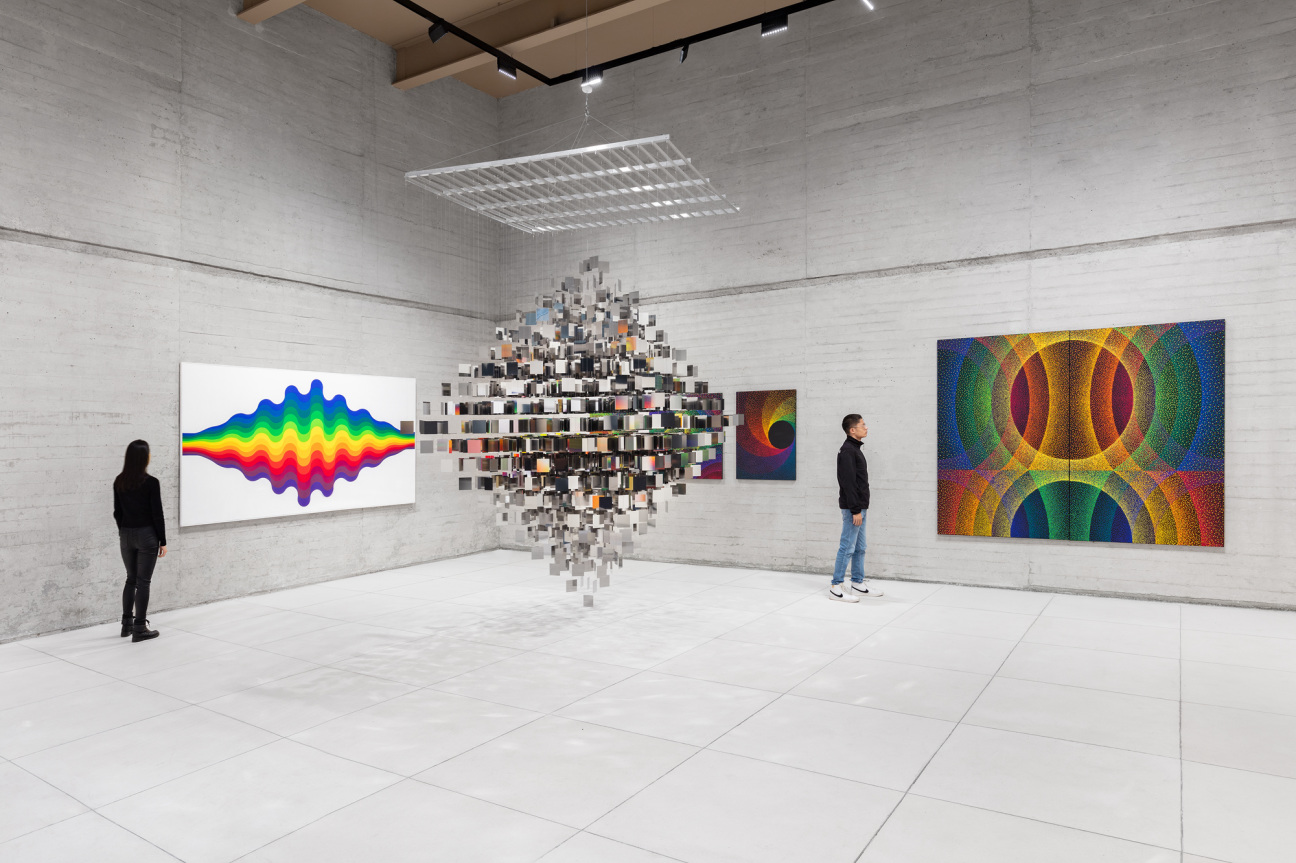With an illustrious career spanning decades, Paris-based artist Julio Le Parc’s current exhibition at Galería RGR in Mexico City, “Julio Le Parc: Visual Encounters,” is his first solo gallery show in the country.
Born in 1928 in Argentina, Le Parc is one of the founding members of the Groupe de Recherché d’Art Visuel (GRAV), the Parisian organization from 1960-1968 believed that the individual art maker was less relevant than the collective experience—creating or suggesting a symbiosis between makers and viewers. In the early ‘60s, 11 Op-Kinetic artists including Le Parc, sought to awaken public engagement through interactive installations and labyrinths. Today, this could be looked at through the ubiquitous use of Instagram and digital media like Tik Tok, whose platforms often determine how we, as a global society, connect with each other and our disparate environments. The methodology of these additional eyes (via a screen, via a lens) engages with and presents itself often in the museum and gallery worlds. Le Parc’s work, begs for this sort of digital participation.

Upon entering the gallery in Mexico, the artist’s precision is immediately apparent. Le Parc’s work is a mathematical study on light, color, space and, optical relationships. At 94, he is boisterous and sharp, and still plays a huge role in his studio and exhibition practice, proactive and meticulous. The star of the show just might be Continuel Mobile Losange Acier, 2020, a three-dimensional mobile cube consisting of polished steel squares hanging by a thin plastic line. The hanging sculpture naturally moves, shifting subtly from any variation of air in the space. Polished steel—which was also employed by Arte Povera artist Michelangelo Pistoletto in his many “mirrored” works has an extremely reflective surface. The material gleams, reflecting and refracting light, allowing those present to find themselves in the various movements. By looking through the lens of an iPhone (or Android) device, not only is the viewer present inside the sculpture, but a new layer of visibility and observation is traversed. This happens through live streaming content, stories and reels. The layered lens process is reminiscent of Hitchcock’s early films and use his Uncanny modality and point of view, showing the audience something directly without the need of dialogue. The invisible dimensions that we experience on a daily basis in 2022 merge within the process of observing, seeing, being seen. The maker/conductor (artist) on the other side is essentially the producer of the experience. In the early stages of these series, and his forthcoming adaptations of this material, Le Parc was ahead of his time considering the digital/Internet’s dimension—another realm to cross as a portal into the artwork.

In the main room of the gallery are works from several series that have continued throughout his career. Ondes, 1959-2022 and Sèrie 16, 1972-2022 are brightly colored diagrammatic paintings that contain Le Parc’s limited palette of 14 colors. Consisting of curved, waves (as the name in Spanish suggests), Ondes are programmatic, mathematical compositions that don’t contain straight lines. The latter similarly doesn’t contain straight lines, but each painting is a bullseye of color, perfect circles varying in scale from the smallest (center) to the largest (circumference). All the tones are hand-mixed and must be matched in the studio prior to landing on a surface, which gives his work a particular signature that have functioned throughout his career.

For the artist, meaning—much like the singular versus collective—is less relevant than the exploratory journey he embarks on. Optical Art doesn’t rely on meaning or feeling, but rather visual dynamics. So, when much is removed—representation, texture, drawing, along with the physical presence of the artist—what remains is alchemy. A spiritual experience is as personal as it is empty. In the vacancy of marks, figures, or even what one might call abstraction, Le Parc and Optic artists rally to dissect and renegotiate space, whether in two-or-three-dimensions. At Galeria RGR, the architecture of the gallery—formally a publishing house—suits Le Parc’s practice and doesn’t allow for any external distractions, consisting of grey stone walls and a mostly windowless interior. Not installed chronologically but ranging from a series of early studies on paper (on loan from the atelier) to works made in 2022, those who are able to visit will see what is in short, a truncated retrospective.
“Julio Le Parc: Visual Encounters” is on view until November 12, 2022 at Galería RGR at Gral. Antonio León 48 Colonia San Miguel Chapultepec Mexico City – CDMX 11850 Mexico.










 in your life?
in your life?

